You're Probably Measuring Things Wrong
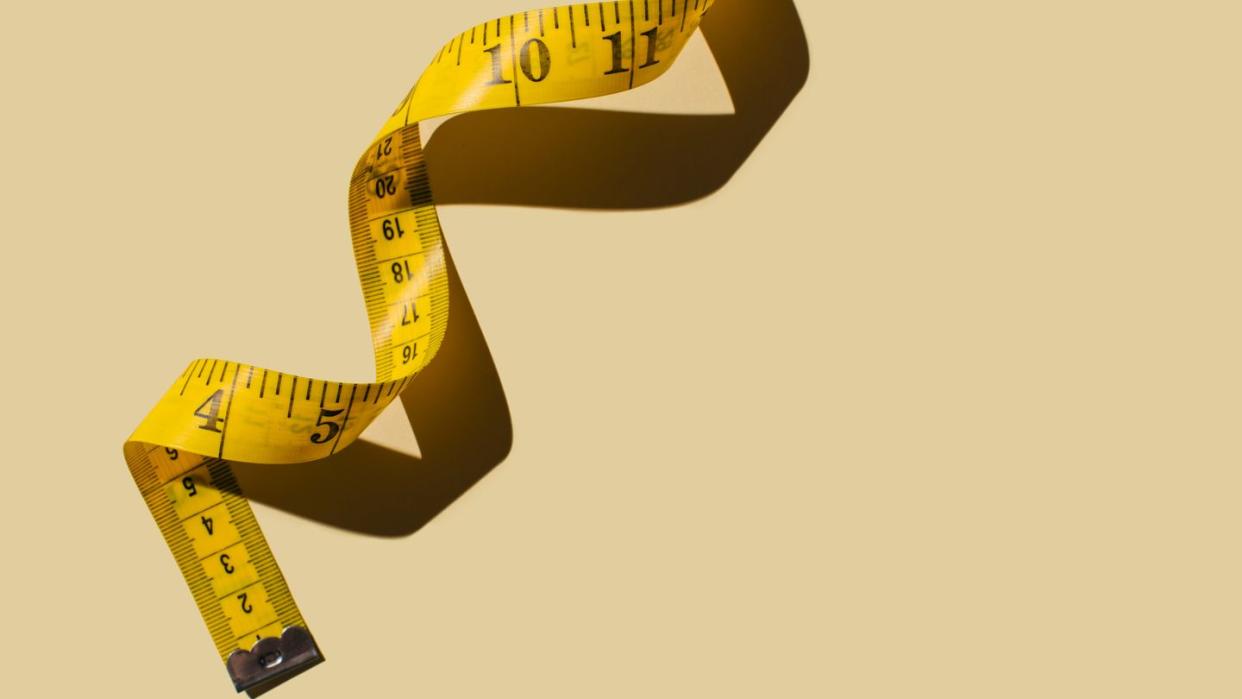
"Hearst Magazines and Yahoo may earn commission or revenue on some items through these links."
[table-of-contents] stripped
Reading a tape measure can be mind-bogglingly difficult if you're unfamiliar. There are an abundance of small lines and marks, each one smaller than the last. Between inches, feet, and fractions of them both, it can be difficult to know what the numbers even mean. Maybe you need to trim a piece of wood to craft your dream bathroom vanity, or maybe you're cutting fabric to get the ideal length for your custom curtains. This is where we can help. If you're wondering how to read a tape measure properly, you've come to the right place.
Ahead, we break it down to the literal millimeters to ensure you get the most accurate measurement possible, every single time. Plus, read on to find the best tape measures for different DIY tasks.
Tape Measure Basics
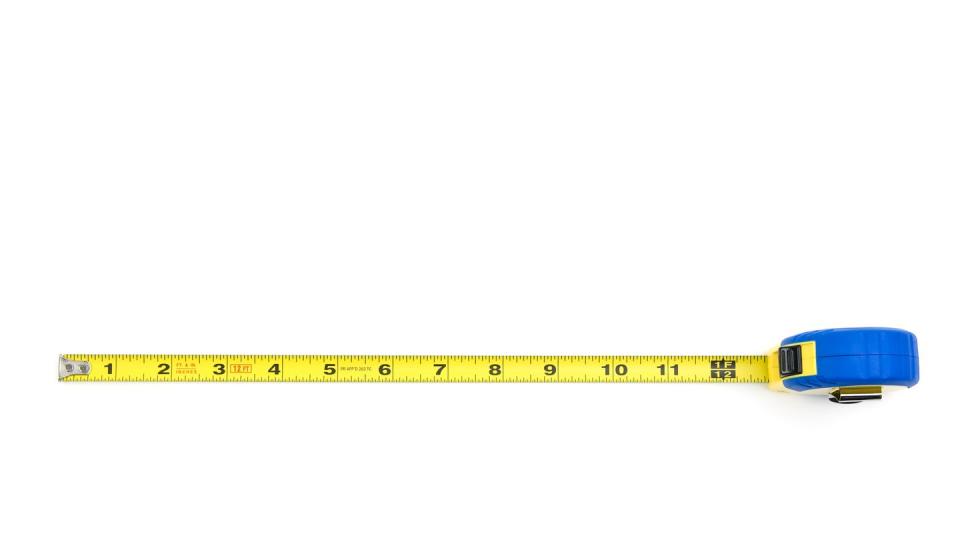
Foot: Typically marked by numbers in a contrasting color, red line, or bolded arrow, foot marks occur every 12 inches.
Inch: The most prominent marks on a tape measure, inches are marked with the longest black line and large numbers.
Half-Inch: The second longest line, the half-inch mark occurs halfway between each inch. On some tape measures, this is also marked with a 1/2.
Quarter-Inch: Four per inch, the quarter mark divides each inch into, well, quarters. You can identify this mark as the line that's slightly shorter than the half-inch marks.
Eighth-Inch: Most tape measures measure only to the eighth of each inch, so you can identify this either by counting to eight from the start of the inch (the longest line), or by finding the shortest lines on the tape.
Sixteenth-Inch: The smallest line, there are 16 marks per inch. Don't be worried if you can't find it—some tape measures only measure to the eighth mark.
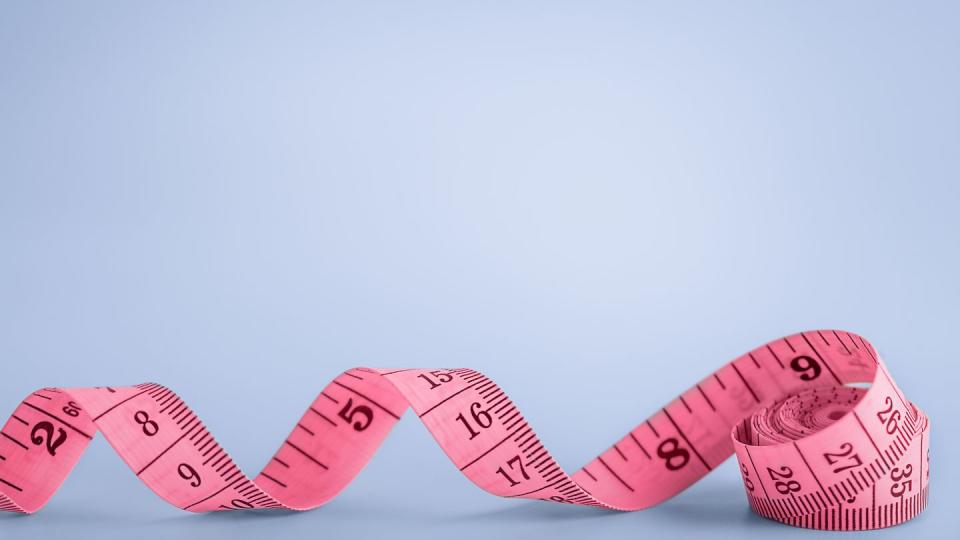
More common on the kind of flexible tape measures used for sewing than retractable ones, the reverse side may show measurements in centimeters and millimeters in addition to the inches and feet on the front side.
Centimeters: The largest line and marked with a number, the centimeters are the clearest measurement on the tape measure.
Millimeters: There are 10 millimeters per centimeter, and these will be marked by smaller lines between each centimeter.
What Kind of Tape Measure is Right for You?
It's helpful to have a variety of measuring devices on hand to be prepared for any type of project.
Retractable Tape Measure
The most versatile option, a traditional retractable tape measure is ideal for flat or vertical surfaces like walls, furniture, wood, and more. Most can stand on their own, so you have to hold only one end, allowing you measure farther than your arms can reach.
Flexible Tape Measure
Best for fabrics, bodies, and rounded items, a flexible tape measure is great if you need to calculate around something. They typically have a shorter maximum length than traditional tape measures, so keep that in mind if you need to measure large, round items.
Laser Distance Measurer
Tape measures measure only a limited area, which can leave you adding up various totals. If you need to measure entire rooms, walls, or surfaces that exceed the tape's maximum length, we recommend investing in a laser distance measurer.
25-foot Retractable Tape Measure
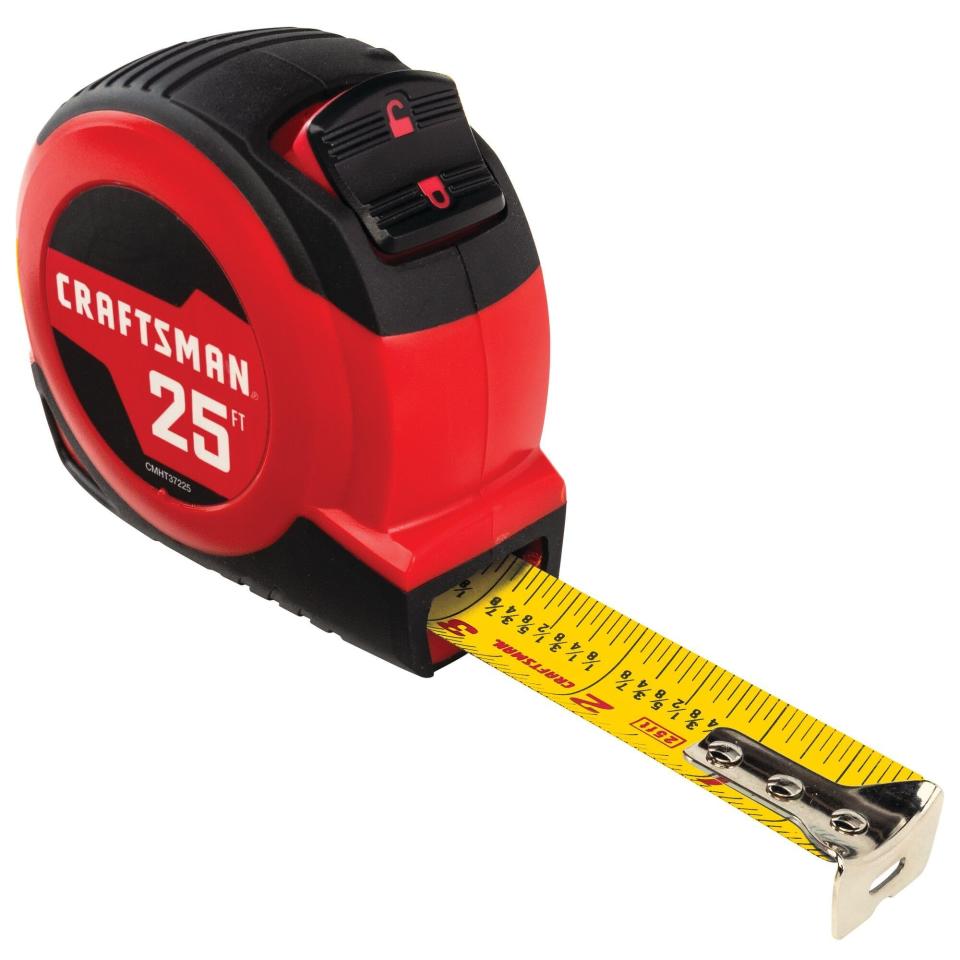
25-foot Retractable Tape Measure
amazon.com
$13.99
Craftsman60-inch Soft Tape Measure

60-inch Soft Tape Measure
amazon.com
$3.59
Amazon165-foot Laser Distance Measurer
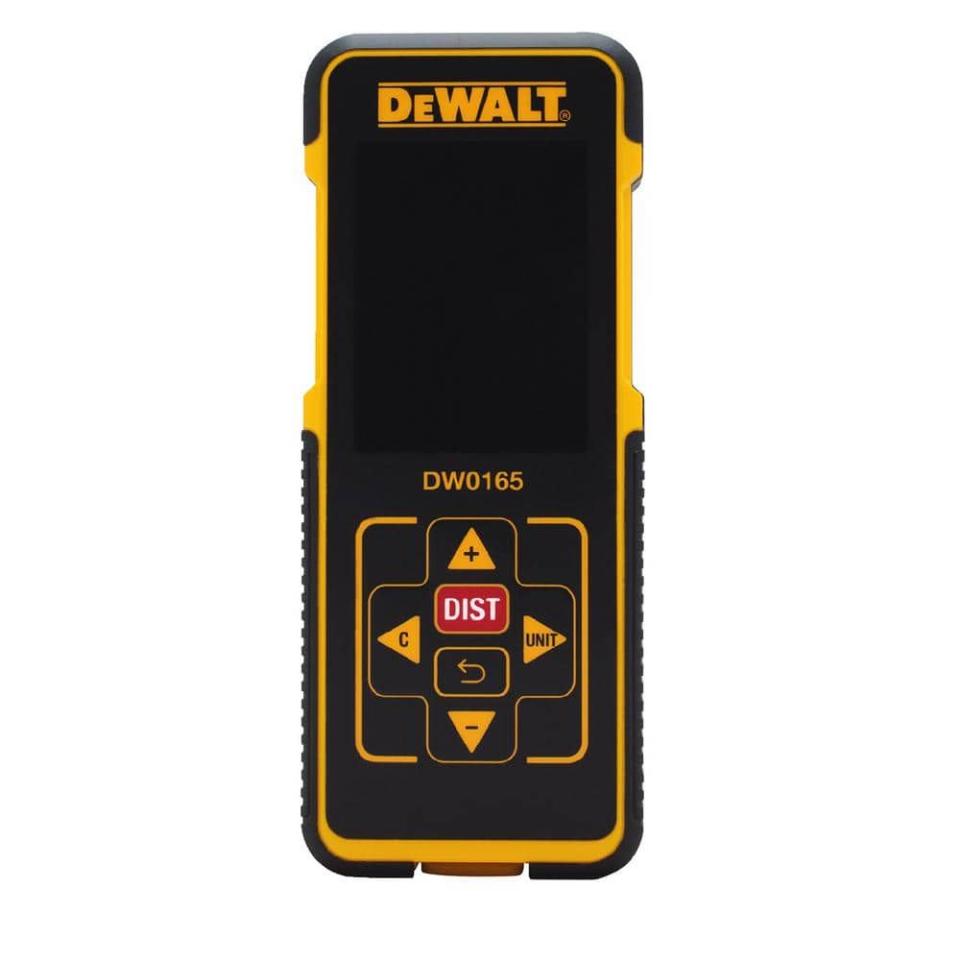
165-foot Laser Distance Measurer
homedepot.com
$116.10
DewaltHow to Use a Tape Measure
Step One: Start by placing the metal end of the tape measure flush against the edge of whatever you're measuring. Then, pull the tape measure out until you've reached the other end.
Step Two: Locate the inch mark closest to the end (not past the end!), and count the shorter marks outward. For example, if there are seven marks past the 10 inch line (assuming this is a 16th tape measure), your total would be 10 and 7/16th inches.
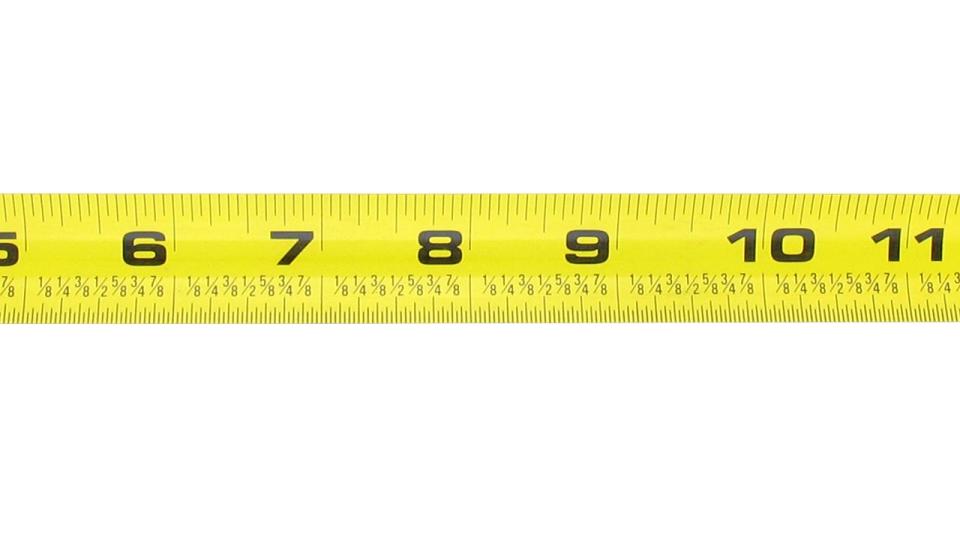
How to Get the Most Precise Measurement Possible
Because one-sixteenth of an inch matters when you want drapes that just kiss the floor.
Don't Round Up
While this may sound self-explanatory, it can be tempting to estimate when a measurement falls between an inch or ends at a 1/16 mark, but take care to write down the exact line rather than round up or between between inches.
"Burn an Inch"
A common practice among professional carpenters and woodworkers, rather than hook the tape measure's metal teeth at the beginning of what you need to measure, align the one inch mark to the beginning instead. The metal hook can sometimes be loose or adjustable, which can lead to inaccurate measurements. By opting to forego an inch on the front end—the total measurement will always be one inch shorter—you can ensure an accurate measurement every time.
Tape Measure Tips and Tricks
Carpenters and woodworkers live by these tricks of the trade. Now you can too.
The metal front is adjustable. You can often pull out the metal teeth to leave a gap between them and the start of the tape. This allows your edge to line up as precisely as possible.
It can also notch onto nail and screw heads. The gap between the two metal teeth isn't just for easy grabbing. In fact, it can latch onto nailheads and screws for a stable starting point.
You can mark your measurements without a writing tool. If you press down hard enough, the serrated edge of the teeth will leave a small indent or line. This shows where your measurement ends on the actual surface, no pencil needed.
A tape measure can act as a ruler. You can use your tape measure in place of a ruler to draw straight lines.
There are stud marks in addition to numbers. Every 16 inches, there might be a red number or a diamond which marks the common distance between studs, rafters, and joists. This feature is most commonly used by professional builders and contractors, but it's very helpful when you're trying to mount something on a wall. Find one stud, and you can mark the rest of them using your tape measure.
You Might Also Like

